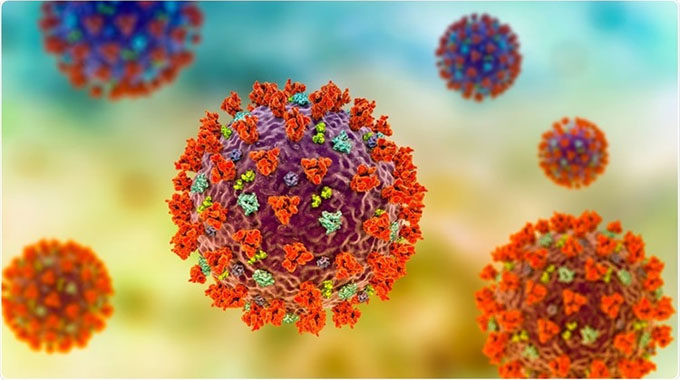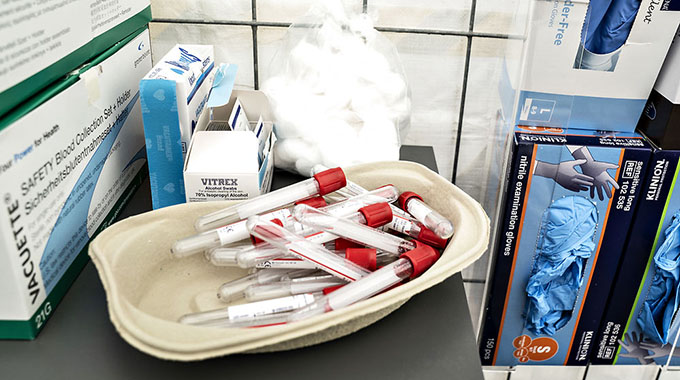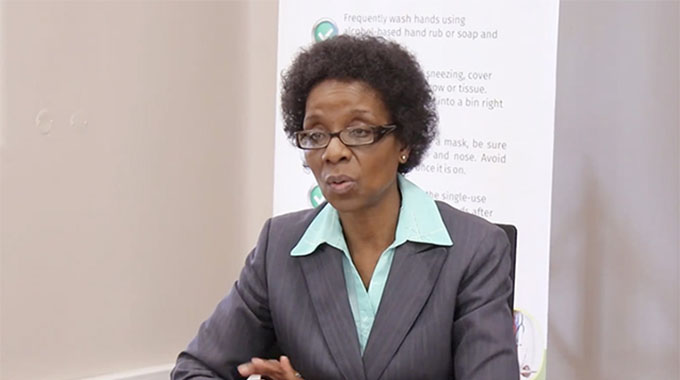A new measles-based COVID-19 vaccine

Dr. Liji Thomas, MD
In just over six months, the ongoing COVID-19 pandemic has caused over 572,000 deaths from 13 million cases the world over. Despite the massive research effort, scientists are yet to come up with a viable vaccine candidate.
Now, a new study by researchers from Germany’s Paul Ehrlich Institute and published on the preprint server bioRxiv* in July 2020 describes a potential vaccine based on the measles vaccine, which elicits both an antibody response and cellular immunity against the virus. This also protects against the measles virus. This could be a significant weapon in the fight against these two threats.
The Study: Recombinant S Protein-Expressing MeV
The current study focuses on the use of recombinant measles virus (MeV) as a useful platform on which to mount vector vaccine efforts. This was first used in the SARS and MERS epidemics of 2002 and 2012, respectively, and the vaccine was intended to elicit immunity against both. The vector vaccines containing recombinant MeV as well as the wildtype Spike (S) protein of the SARS virus elicited high titers of neutralizing antibodies, as well as T cells producing IFN-γ. In immunized animals who were then exposed to the virus, the virus titer was reduced by over one hundred times. Similar responses occurred in MERS. Thus, this platform has been used by the Coalition for Epidemic Preparedness Initiative (CEPI) as a springboard for anti-SARS-CoV-2 vaccine development.
The MeV-based MERS-vaccine used the MERS-CoV S protein to induce strong immune responses, both humoral and cell-mediated. As a result, and because the current virus also elicits neutralizing antibodies directed against the S protein, the researchers inserted the gene that encodes the SARS-CoV-2 S protein into two distinct parts of the MeV genome, to alter the expression of the antigen.
Successful Viral Replication and Amplification
The researchers were able to confirm that both recombinant MeV survived and replicated with stable amplification being observed in 10 or more passages. The stability of the viral genomes was confirmed by sequencing at his point. One of the recombinant strains had a slightly lower S protein expression, while the other had a lower total viral protein expression.
The incorporation of the S protein caused a hundredfold drop in maximal viral titer, but an increased fusion activity, fourfold that of the control cell. When the investigators examined the cause of this hyperfusogenic activity, that is, whether the SARS-CoV-2 S protein was causing increased membrane fusion, the protein was expressed in other cells, and this showed that it was indeed responsible for inducing cell-to-cell fusion.
In other words, the ability of the MeV encoding the SARS-CoV-2 gene induces increased fusion by expressing a fusogenic form of the S protein of the SARS-CoV-2, which indicates that cells infected by the vaccine candidate do express a functional S protein that was correctly folded. Among the two candidates, the one with the S protein in the H position was chosen as it had slightly lower S protein expression levels but higher viral replication.
Testing for Neutralizing Antibodies
The vaccine candidate was tested in engineered mice models, via intraperitoneal injection on day 0 and day 28. At 21 days post-immunization, the serum was analyzed for total IgG antibodies against the MeV bulk antigens or specifically against the S protein.
The researchers found that mice vaccinated with the recombinant vaccine had IgG antibodies targeting the S protein, but only after immunization. Mice immunized with the medium (mock control), or MeV did not show these antibodies either. The final sera of immunized mice, irrespective of the type of MeV used, showed IgG binding to MeV bulk antigens. Thus, at least one immunization succeeded, showing the vaccine to be immunogenic. The use of S protein for immunization (positive control) elicited higher anti-S IgG than the recombinant vaccine.
Neutralizing antibody response to the measles virus was positive in most of the immunized mice, including those receiving the recombinant vaccine and the control virus (MeV without the SARS-CoV-2 S protein), but there were individual differences. One mouse out of those receiving the S-containing MeV vaccine had an initial weak reaction and another an adverse reaction. These could be due to technical issues, as the finding was very unusual.
All animals, however, developed neutralizing antibodies to MeV after two immunizing doses, with a threefold rise in titer after the second dose. Neutralizing antibodies to the SARS-CoV-2 S protein were present after two doses of vaccine, and reached a titer comparable to that of human reconvalescent serum, but only in half of the six mice. The mice which received the recombinant S protein alone showed no neutralizing antibody activity, which may mean the high levels of IgG antibodies found in them bind to other S epitopes or have lower binding affinity than those induced by the MeV recombinant S vaccine.
Thus, the MeV expressing SARS-CoV-2-S protein-induced intense neutralizing antibody activity against both MeV and SARS-CoV-2. This occurred even though the type I interferon receptor was knocked out in the mouse model used to allow MeV propagation. Despite this partially impaired immune response, the MeV was a very immunogenic platform.
Secondly, the investigators point out that 100 percent pathogen neutralization is not a sensitive assay for neutralization ability. In fact, they say, “Just detectable VNT already indicates considerable neutralizing activity.”
Thirdly, they suggest that “These data suggest that anti-S antibody responses mature after repeated vaccination, but on the other hand that a one-shot vaccination regime will already induce especially functional memory T cell immune responses.”
Strong Cellular Immune Response
Cellular immunity was also stimulated, both in the animals which received the above vaccine and the empty MeV vaccine and even in those who received only the S protein. This shows this antigen has a strong stimulatory effect on cellular immunity.
Among the stimulated CD8 cells, about half expressed two cytokines, and 13 percent expressed three, namely, TNF-α, IL-2, and IFN-γ. Reactive CD4 T cells were much lower in frequency, but about the same percentages of multifunctional cells were observed in this compartment as well.
Thus, the study shows, vaccination with this recombinant MeV vaccine “induces not only IFN-γ, TNF-α or IL-2 expressing T cells directed against SARS-CoV-2 and MeV, but also a significant fraction of multifunctional cytotoxic T cells specific for SARS-CoV-2 S and CD4+ T cells specific for MeV antigens.” In other words, it elicits a “broad and robust SARS-CoV-2-specific immune response.”
Induction of T Cell Immunity
Restimulation with the S antigen showed that cytotoxic T lymphocytes (CTLs) showed a proliferative response, which is important in clearing virus-infected cells. CD4 T helper cells also showed proliferation. This indicates a specific effect on cytotoxic memory T cells following vaccination. The stimulated CD8 positive CTLs can lyse cells that present the S antigen of the SARS-CoV-2, showing a specific response. Thus, the vaccine “induces fully functional antigen-specific CD8+ CTLs.”
Bias Towards T Helper Cell Responses
The results showed a T helper cell bias observed, reducing the potential for harmful immune effects. This includes the risk of antibody-dependent enhancement (ADE) and enhanced respiratory disease (ERD) that occurs when the immune response is skewed towards a Th2 response. IgG1 and IgG2 antibodies are markers for Th2 and Th1 responses, respectively.
Highly Promising Candidate for Further Trials
In the current study, the S-adjuvant vaccine resulted in high levels of specific IgG1 antibodies but low levels of IgG2 antibodies, but the MeV candidate vaccine produced a tenfold higher level of IgG2, with a hundredfold reduction in IgG1. This indicates a “favorable Th-1 bias in animals immunized with the MeV-derived vaccine candidate.”
The many advantages of this bivalent vaccine candidate make it a desirable one for future study. Its ability to protect against measles as well enhances its potential for incorporation into routine vaccination schedules, which would protect children and perhaps prevent their spreading the virus to other more vulnerable groups.
Secondly, the process for measles vaccine production is already in place, enabling the large-scale production of the recombinant vaccine if necessary, without impinging on the production of other routine vaccines.
*Important Notice
bioRxiv publishes preliminary scientific reports that are not peer-reviewed and, therefore, should not be regarded as conclusive, guide clinical practice/health-related behavior, or treated as established information.- news-medical.net









Comments